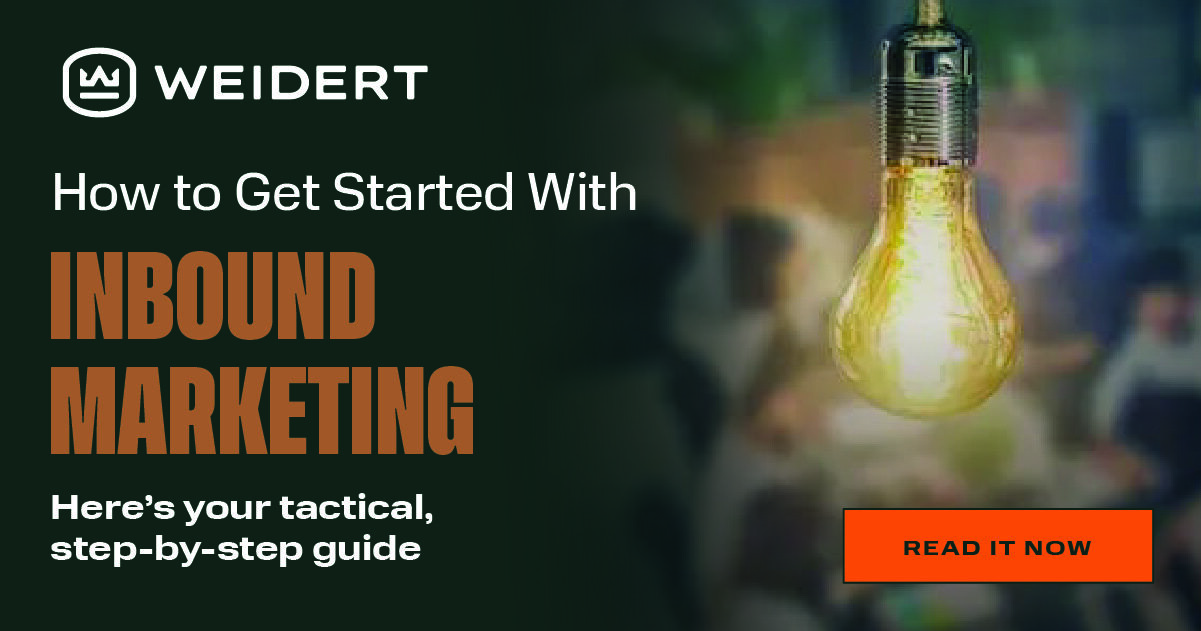This article was originally published in 2016 and then updated in 2018 and 2020 for current data and best practices.
HubSpot Workflows: Lead Nurturing Best Practices & Tips for 2020
Written by
Published on
Feb 3, 2020
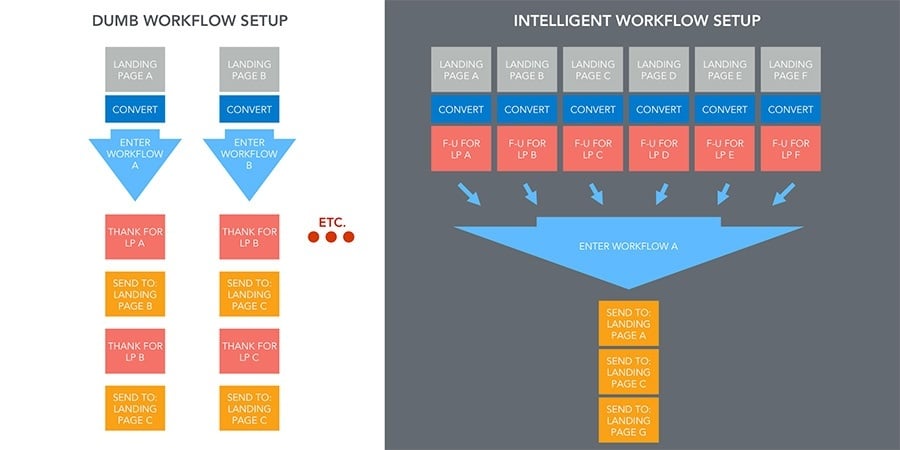
Marketers who've used automation technology know just how much it’s continually improved over the years. The drip emails and segmented lists from those early days pale in comparison to today's nurturing capabilities. With dependent logic, advanced segmentation criteria, and personalized messaging, inbound marketers can be more precise in their targeted email marketing efforts than ever before.
Yet, with all these advances, it can be hard to keep track of email marketing best practices for lead nurturing. In fact, it's hard to have the time to even develop best practices!
We've worked hard over the years to develop the most effective ways to nurture our leads. The following reveals some of our insider tips for using HubSpot workflows to help your company create effective lead nurturing campaigns as part of an inbound marketing strategy.
Why You Need a New Automated Email Methodology
Most marketing automation software makes it relatively easy to get started with basic email marketing campaigns through the use of email templates and tools. However, it's important to realize that many out-of-the-box capabilities meant to help you get started will need some customization to sustain your long-term marketing initiatives.
This is true whether you're using HubSpot or any of its competitor tools.
One of the easiest ways to get started is to trigger an automated nurturing workflow based on how contacts fill out a form on your website. This works well in the beginning and provides immediate lead nurturing and timely follow up to keep them engaged. However, as you improve your conversion forms and grow your library of content, sticking with simple form-submission-based automation becomes less impactful. And, to be honest, today’s B2B buyers have come to expect more thanks to the hyper-personalized B2C experiences like Amazon.
Here, we'll outline a highly strategic approach to marketing automation — an approach we use as our standard operating procedure for lead nurturing.
1. Create Lifecycle Stages as the Foundation
Today, far too many marketers choose single form submissions, email actions, or other behavior-based properties as the triggers for automated nurturing. There's one big reason that's a mistake: contacts can and will have multiple trigger actions, which means you're essentially asking fate to determine which leads will be:
- Left out of nurturing
- Enrolled in multiple marketing email workflows
- Unsubscribed because they're immediately sent too many emails
Instead, we recommend that you use single-use contact properties (such as lifecycle stage) as the foundational trigger for your workflows. For example, a contact can only have one lifecycle stage at a time: they're either a Subscriber, Lead, Marketing Qualified Lead (MQL), Sales Qualified Lead (SQL), Opportunity, Customer, Evangelist, or Other.
By using lifecycle stages as your foundation for triggering workflows, you'll be:
- Planning your lead nurturing in a way that strategically aligns with your marketing and sales funnel
- Intelligently setting up a process so contacts are enrolled in only one nurturing workflow at a time
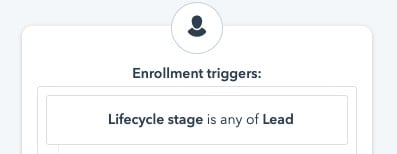
2. Maintain Context
The advantage most marketers enjoy by building workflows based on form submission is that you can maintain context and continuity from the original download. For instance, if your contact downloaded "How to Repurpose Marketing Content," you can reference the original piece in the first step of the workflow. This nurturing tactic helps create a unified marketing experience.
However, many HubSpot users don’t realize you can still achieve this context and continuity by using the follow-up email feature, rather than a workflow email. Using follow-up emails, you can send a timely and relevant message to contacts who downloaded a specific piece of content. In addition to a sincere thank you and direct link, you can provide added value by sharing a related call to action, such as a blog post or advanced content piece that relates to the topic of interest, or a well-advised next step in their learning journey.
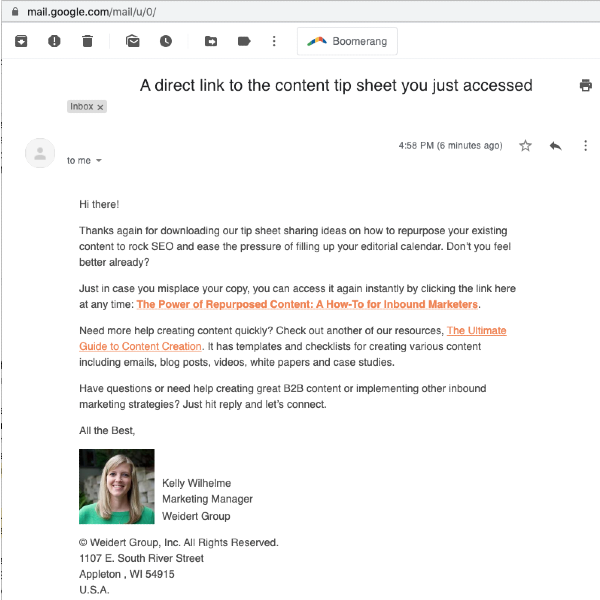
With each touch point, you can build rapport and trust by engaging them, anticipating their needs and next steps, and creating a helpful and frictionless experience.
3. Guide Leads on Their Buyer’s Journey
Traditionally, HubSpot identified the Awareness stage as the top of the sales funnel. Not that long ago however, Hubspot introduced a major paradigm shift away from the funnel and, instead, embraced the flywheel.
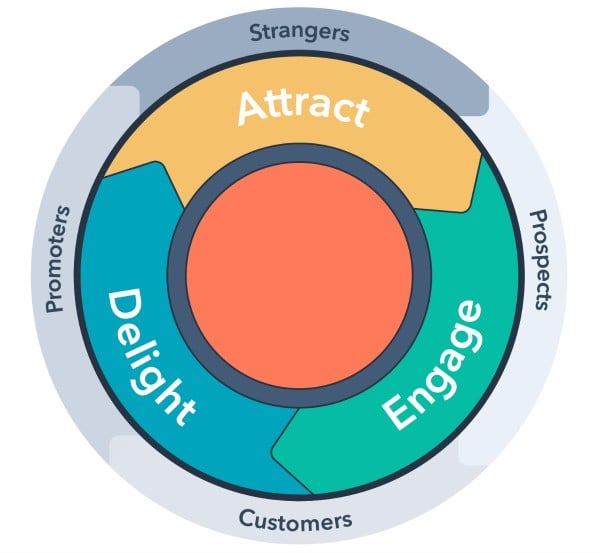
Source: https://www.hubspot.com/flywheel
The power of the flywheel emphasizes the role that existing customers (and prospects) play in fueling new growth opportunities and attracting new leads. How you guide prospects along the buyer’s journey is partially reflected in the way you construct your email nurturing workflows.
If a sales-qualified lead is defined by a contact's level of knowledge and interest in your products and services, for example, then make sure your communication meets them where they’re at. In other words, don’t push them too far and too fast toward a sale or they may feel pressured instead of nurtured. Likewise, don’t bring them back to the beginning by sharing introductory content when they’ve already reached an informed level of understanding about your products and services.
4. Reserve Segmentation for the MQL Lifecycle Stage
We interpret marketing-qualified leads (MQLs) as "leads who are worth creating targeted content for." In other words, MQLs are those leads that fit your specific target personas.
In step 1, we recommended creating triggers that rely on single-use contact properties; for instance, the lifecycle stage. You can add other single-use contact properties to lifecycle stages to further segment them without creating overlapping groups of leads.
Add the contact’s known Industry property, for example, to your workflow trigger logic alongside the lifecycle stage to create specific segmented workflows for each of your target verticals. In addition to Industry, consider going deeper to explore the prospect’s pain points, biggest challenges and where they are on their buyer’s journey. For example, if you're an OEM that has both products and services divisions, use your forms to help the buyer self-identify their needs and then nurture them with appropriate content.
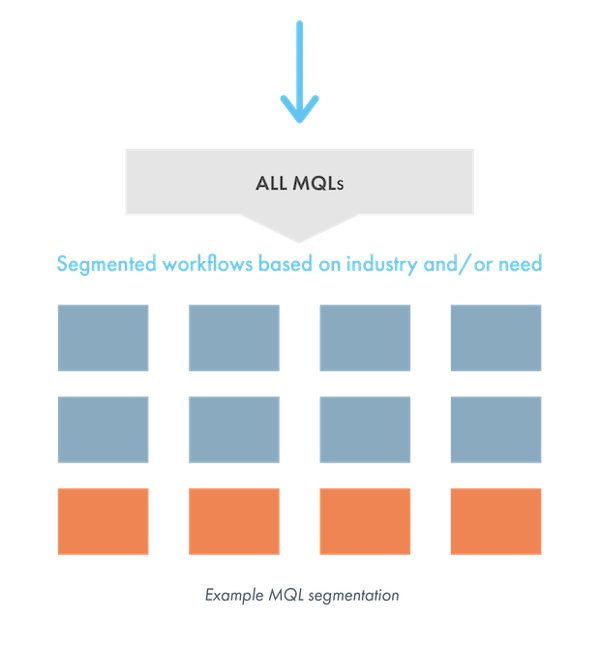
Intelligent Workflows Prioritize Nurturing
If you find that your workflows are downright messy and leads are in multiple nurturing streams, then you’ll have to dig in and start prioritizing workflow planning so you can work smarter, not harder. Sound like your situation? Don’t worry, you're definitely not alone.
Carefully planning intelligent workflows is a solution that many companies need to tackle if they want to see success in inbound marketing for the long-term. If all this talk about lead nurturing, form fields and email automation has your head spinning, check out our Getting Started with Inbound Marketing guide below. It covers a lot of the why and how-to of lead nurturing in more depth.
About the Author - Laura Sheptoski
Laura is a detail-oriented consultant and project manager, with a background in public relations, social media engagement, and client content creation. Prior to her time at Weidert Group, Laura managed PR for an industrial services company, and maintains a strong focus on earned media within our inbound marketing programs.
Subscribe To Our Blog
Information. Insights. Ideas. Get notified every time a new Weidert Group blog article is published – subscribe now!
You May Also Like...

Artificial Intelligence
Revenue-Driving B2B Content Marketing Strategy with Andy Crestodina

Artificial Intelligence
AI Agents Are Here—How Smart Businesses Are Using Them Now

Inbound Marketing
Podcasting Playbook: What We Learned After 100 Days of Running a B2B Podcast
Accelerate Your Growth with
Weidert Group
If you’re ready to explore a partnership, request a personalized consultation with our team.
